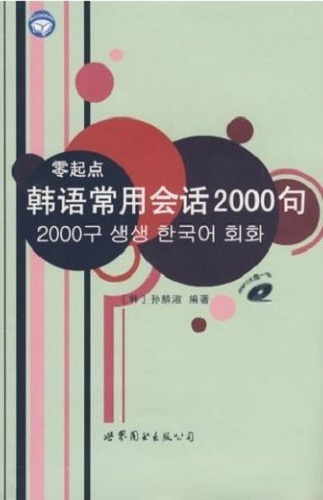Frequently Used Korean Dialogues: 2,000 Sentences is a good book to turn to when you’re wondering what the 2,000 most frequently used sentences or phrases in the Korean language are. Keep in mind that the book is completely written in Chinese and Korean, if you can read and understand either one of these languages then this book will be very beneficial for you.
Overview
Frequently Used Korean Dialogues has (as advertised) 2,000 sentences throughout its 300+ pages, all from a wide variety of everyday topics like questions, requests, and expressing opinions. There are 60 units which cover a handful of sentences and dialogues that can be read in Chinese, Korean, or Korean written in its Romanized form; this is very useful for students who can’t quite read the Hangul script. The book is laid out pretty simply with a handful of dialogues and sentences in each chapter along with some explanations of how they are used and the formalities of each one. The book is, if anything, more of a phrasebook rather than a textbook, as there are no actual activities or practice exercises included. In a sense, the book challenges the student to memorize important phrases and expressions
"The book is, if anything, more of a phrasebook rather than a textbook, as there are no actual activities or practice exercises included."
As mentioned before, this book skips the grammar, listening, and writing activities and purely focuses on memorizing important phrases. Each lesson simply offers the student a handful of frequently used dialogues which are used in specific situations (socializing, communicating at work, asking for directions, etc.). The dialogues in each unit can be read silently or can be worked on with a partner; after reading over each text, students can practice their pronunciation by reading the text in its Romanized version and going over the pronunciation guide. The flow and rhythm is simple but there really isn’t a whole lot for the learner to work on except for reading practice.

Pros
· The book offers several important phrases that are used in daily Korean life.
· Although the book is written in Korean, Romanized versions of each text and pronunciation guides are available for those that haven’t yet grasped Hangul.
Cons
· No exercises or activities to practice using the new sentences learned.
· No pictures or images. The book is purely text in all of its 300 pages which can be a bit monotonous.
· Nothing written in English so unless you can understand Korean or Chinese, your level may have to be quite Intermediate to understand the book.
Recommended For:
· Students who like to study using textbooks and reading sentence after sentence.
· Chinese students learning Korean.
· Students who want to know the most frequently used sentences rather than taking a more grammar based approach.
Overall, this book can be very useful depending on your learning style. If you prefer to learn the language’s grammatical structure, learn new vocabulary, and work on listening activities then this book won’t suit you. But if you’re the type of student who likes to memorize sentence after sentence and develop your language skills by working on reading activities, then this book will work for you. Frequently Used Korean Dialogues has 2,000 sentences and may come across as text heavy but if you like to learn what’s most used in Korean, this book is a good pick.




